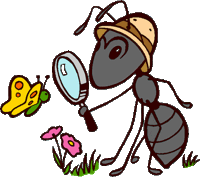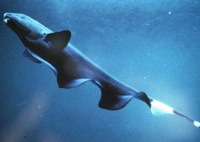Dit bericht is geplaatst op dinsdag 28 juli 2009 om 11:34 in categorieën Nieuws. Je kunt de reacties volgen via een RSS 2.0 feed. Je kunt een reactie plaatsen, of een trackback van je eigen site plaatsen.
Wiskundemeisjes
Ionica & Jeanine
Dieren en wiskunde
In Nieuws, door Ionica
Speciaal voor iedereen die meer van dieren dan van wiskunde houdt: links naar drie berichten over dieren en bacteriën die heel goed zijn in wiskunde. Met dank aan Heleen en Joris voor de tips!

"Consider the following scenario: You want to buy a house with a big kitchen and a big yard, but there are only two homes on the market--one with a big kitchen and a small yard and the other with a small kitchen and a big yard. Studies show you'd be about 50% likely to choose either house--and either one would be a rational choice. But now, a new home comes on the market, this one with a large kitchen and no yard. This time, studies show, you'll make an irrational decision: Even though nothing has changed with the first two houses, you'll now favor the house with the big kitchen and small yard over the one with the small kitchen and big yard. Overall, scientists have found, people and other animals will often change their original preferences when presented with a third choice.
Not so with ants."
Lees hier de rest van het artikel bij ScienceNOW.

"Weakly electric fish are really interesting to us because they have the ability to solve a very challenging mathematical problem when catching their food." explained Professor Bill Lionheart at The University of Manchester.
"These fish put out an electrical signal and measure that to see whether it's something they might like to eat, or something that's going to eat them."
It was while working on a technique called Electrical Impedance Tomography (EIT) to see things hidden in the human body that he made an important connection.
"It occurred to us that electric fish know how to do that anyway," said Prof Lionheart.
Lees hier de rest van het artikel bij de BBC.

"The Hamiltonian Path Problem asks whether there is a route in a network from a beginning node to an ending node, visiting each node exactly once. The student and faculty researchers modified the genetic circuitry of the bacteria to enable them to find a Hamiltonian path in a three-node graph. Bacteria that successfully solved the problem reported their success by fluorescing both red and green, resulting in yellow colonies."
Lees hier het artikel op ScienceDaily.
 Internetbureau Rotterdam
Internetbureau Rotterdam 
